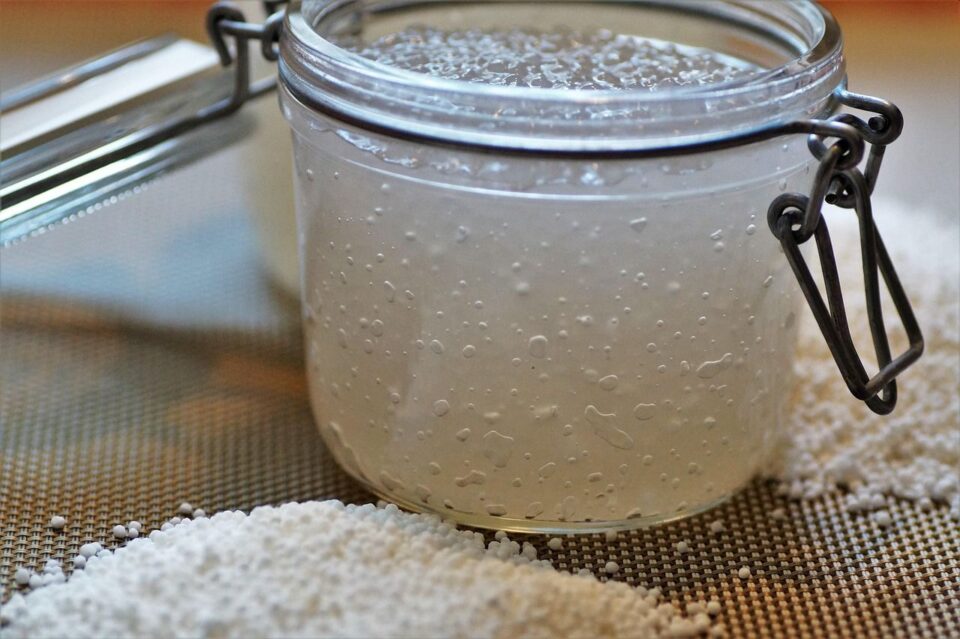Picking the right potato starch substitutes will require a bit of understanding of the role potato starch fulfills in many recipes. While there are several types of starch in the culinary world, each has its own strengths and uses. That’s a big part of why you can’t replace one starch for another.
Of course, there is no exact duplicate for potato starch. So, when picking a substitute, we look at the limitations and qualities that a substitute might bring. Additionally, the specific use of potato starch and its role in the recipe can enlighten us on the way to choosing the right substitute.
Conventionally, the best substitutes for potato starch are some starches (cornflour/cornstarch, tapioca starch (pearls), arrowroot powder) and some flours (wheat flour, rice flour, potato flour, coconut flour). Depending on the recipe and specific requirements, some unusual options like almond flour, roux, and beurre manié could work too.
As you can see, there is some room for a detailed discussion on how these substitutions can work, and how to handle these replacements effectively. Let’s dive in!
Table of Contents
Top Potato Starch Substitutes And How The Substitution Works
1. Cornflour/Cornstarch
One of the most popular starches in the world (if not the most popular), cornflour can also work as a good potato starch substitute. You can basically use the same amount of cornflour in a recipe as potato starch, thus making this a 1:1 substitute in ratio. Although you can use a little more cornstarch if you’re using it as a thickener and would like to add a bit more substance.
Now there are a few things to remember when using cornflour as the replacement for potato starch.
First off, corn starch is not an ideal ingredient for a recipe that is intended for the refrigerator. It does not do well in the cold for long.
On the other hand, it does exceptionally well in recipes that need to be cooked/heated for a long time. This is a place where it outshines potato starch, since potato starch cannot handle high heat all that well. In fact, its translucent appearance can add further to a recipe like this.
On the other hand, if the visual aspect is important, you will have to take this change in consideration. Potato starch is practically transparent, while cornstarch has something of a cloudy appearance.
And finally, remember corn starch should get some cooking time for best performance and taste. Unlike potato starch that is usually added towards the end of a recipe, cornstarch slurry should be added sooner so that it gets some time to cook.
2. Tapioca Starch (Pearls)

Tapioca starch is available in several formats, including flours, pearls, and more. While any of these formats can work as decent potato starch substitutes, the pearls are generally more preferable when replacing potato starch.
Derived from the cassava root, this starch starts absorbing water and working as a thickener as soon as it is added to a recipe. This makes it very suitable for low heat and no heat applications, making it especially useful for recipes like puddings.
Besides, tapioca tends to be colorless, flavor neutral, and gives a smooth, glossy finish to recipes. In many ways, it works rather similarly to potato starch in such applications.
Tapioca starch can have something of a stringy consistency, which is similar to potato starch and thus not a problem for most recipes.
Much like potato starch, tapioca starch doesn’t work very well for recipes that need prolonged cooking. Though a shortcoming, this should not be a problem if you simply intend to replace potato starch for tapioca starch.
When choosing tapioca starch as a substitute for potato starch, you can work the substitution in an equal 1:1 ratio. Additional tapioca can be added if you feel it necessary. The beauty of tapioca starch (and potato starch too) is that you can use them for changes up to the last minute, thus making course-correction rather easy.
3. Arrowroot Starch/Flour
Arrowroot starch is another useful option that can replace potato flour in several recipes. It has a stringy consistency, with a clear appearance and neutral flavor. These attributes make it very similar to potato starch in several recipes.
Arrowroot starch has a high gelation temperature ranging from 140°F to 187°F, much like corn starch, so additional steps when preparing this slurry to replace potato starch.
Another thing to keep in mind is that arrowroot starch should not generally be used for recipes that contain milk. This combination can create an undesirable texture.
As for everything else, from freezing to deep frying, arrowroot starch can replace potato starch with relative ease.
When replacing potato starch with arrowroot starch, it could be necessary to use more of arrowroot starch to get similar results, especially where the desired result is thickening sauces or soups. In such cases, just use slightly more of arrowroot starch than the amount of potato starch the recipe requires.
4. Potato Flour
Now here’s an interesting substitute for potato starch. Interestingly, potato flour and potato starch are often confused for each other, even in product labeling. To keep things simple, it could be said that potato flour is made from boiled (cooked) and dehydrated potatoes ground to a fine powder. While potato starch is extracted from potatoes.
However, potatoes are a starch-rich food and as things stand, potato flour is pretty rich in starch as well. This allows it to carry several duties in a recipe that potato starch would but it’s worth noting that potato flour has a more distinct potato flavor than potato starch, which leans towards flavor neutrality.
Given enough quantity of potato flour and water, you would get very fine mashed potatoes. That’s something to remember when working on the substitution. However, with a significant amount of water, potato flour works more like a thickening agent, completely capable of substituting potato starch.
So, as long as you’re okay with a slightly stronger potato flavor – and to be clear, it is unnoticeable in most recipes – potato flour can work as a wonderful potato starch substitute.
5. Potato Flakes
Much like potato flour, potato flakes are made from cooked and dehydrated potatoes. Apart from the shape, potato flour and potato flakes are essentially the same thing. As such, potato flakes can work as an alternative to potato starch in most recipes, much like potato flour would.
If preferable, it is entirely possible to grind potato flakes into a small powder that very much like potato flour and potato starch.
6. Instant Mashed Potatoes
Instant Mashed Potatoes are a commercial product, that’s essentially potato flakes with seasoning or other ingredients. The idea is to simply add hot water, and you’d get delicious and flavored mashed potatoes.
That said, remember that at the heart of this very convenient product are potato flakes, which can substitute potato starch in several recipes.
The presence of seasoning and other ingredients in instant mashed potatoes limits their applications for use in recipes. However, for some applications like thickening sauces and soups, they might work as a desirable option.
7. Some Flours

Conventionally used flours typically have a high starch content and can be used to replace potato starch in several recipes, especially where thickening or breading roles are relevant. They can sometimes also work in some pudding and baking recipes, but the changes to the texture and visual appeal will be evident.
Here are a few options to look at:
- Wheat Flour: Perhaps the most popular flour in the world, wheat flour can be a convenient replacement for potato starch in several soups and sauces. It can handle most culinary requirements like frying, baking, and freezing, while also providing sufficient capability for uses like a thickening agent or breading.
It’s worth remembering that wheat flour has its own distinct flavor, very different from potato starch. Additionally, it will not lend itself to a transparent or glossy finish. On the other hand, wheat starch is an option worth considering to substitute potato starch. Do note, wheat flour contains gluten. - Rice Flour: Another excellent choice, rice flour can be light and fluffy. This finely ground flour brings a nice touch of texture and is rich in starch. It can work as a suitable thickening agent for several recipes and replace potato starch with ease.
Of course, it does bring its flavor to the mix and will not work for a clear, glossy finish. - Coconut Flour: Coconut flour is increasingly popular for many baking needs, especially in health-conscious and gluten-free applications. However, its role as a substitute for potato starch is rather limited. The results are more likely to follow flavor and diet preferences, rather than any similarity in qualities to potato flour.
- Almond Flour: This is another flour that is more of a diet-preference alternative, rather than a true substitute for potato starch. It’s a useful option for people choosing diet preferences like low-carb, no-grain, or no-tuber food groups.
8. Roux And/Or Beurre Manié
Something of a blast from the past, roux and beurre manie are good choices for thickening sauces and giving them a nice sheen. However, their usability as potato starch substitutes is rather limited.
Roux and beurre manie have been traditional choices for thickening sauces but they are essentially mixes of flour and fat. Their use can have a recipe turn from a light and thick sauce using potato starch, to a thick and heavy gravy with roux.
The suitability of this change is more on your flavor and diet preferences. The substance and taste roux brings to a recipe might be a welcome change in many recipes. On the other hand, if you prefer the recipes to stay on the lighter side and for sauces to thicken without a load of fat, sticking to starches would be a better choice.
Potato Starch Substitutes – Getting All Options Together
As we notice in this article, there are several suitable options available that can work to substitute potato starch in a recipe. Tapioca starch is incredibly similar to potato starch, providing a similar texture, flavor-neutrality and glossy sheen. Besides, it works rather well for desserts or foods that need to be frozen.
Corn starch is a similarly good choice to replace potato starch. However, it doesn’t work as well with recipes that need to be refrigerated or frozen. But it does work rather well with applications that need heat. Arrowroot starch too can provide similar results.
It’s possible to use flours like wheat or rice flour as thickening agents or for some baking recipes. Flours can’t work well for uses that require glazing, but can work with several other recipes. On that note, potato flour and potato flakes can be good substitutes for potato starch, but often bring a stronger flavor.
The article also discusses other options that are more suitable for specific flavor or diet preferences.

